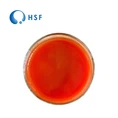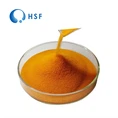Valine can't be produced by yourself and can only be obtained through diet. Meat, dairy, mushrooms, peanuts and soy are rich sources of valine. While most people get enough valine from their diet, there are still people short of this amino acid. Some people even have adverse reactions due to excessive intake.

What Is Valine Function?
Valine works with isoleucine and leucine to promote normal human development and regulate blood sugar.
It provides the muscles with additional energy to produce glucose to prevent muscle weakness during intense physical activity.
It also helps remove excess nitrogen from the liver and transports the body's nitrogen to various parts.
What Happens If You Don't Get Enough Valine?
Maple syrup urine disease is a disease caused by the body's inability to metabolize leucine, isoleucine and valine. The disease is also named because the patient's urine smells of maple syrup. A lack of valine also affects the myelin that coats nerves and can lead to neurodegenerative diseases.
What Happens When You Have Too Much Valine?
Ingesting too much valine can easily lead to the feeling of ants crawling on the skin, and even hallucinations.
A diet that contains too much L-valine can interfere with liver and kidney function and increase the amount of ammonia in the body. Also, people with impaired liver or kidney function should not take isoleucine without their doctor's approval, as too much of this amino acid can worsen the condition.
Best Way To Take Valine
Valine is available as a separate supplement, but should be taken with two branched-chain amino acids, isoleucine and leucine. The ideal ratio is 2 mg each of leucine and valine, and 1 mg isoleucine. In addition, there are mixed health products that provide these three amino acids, which are more convenient to use.





